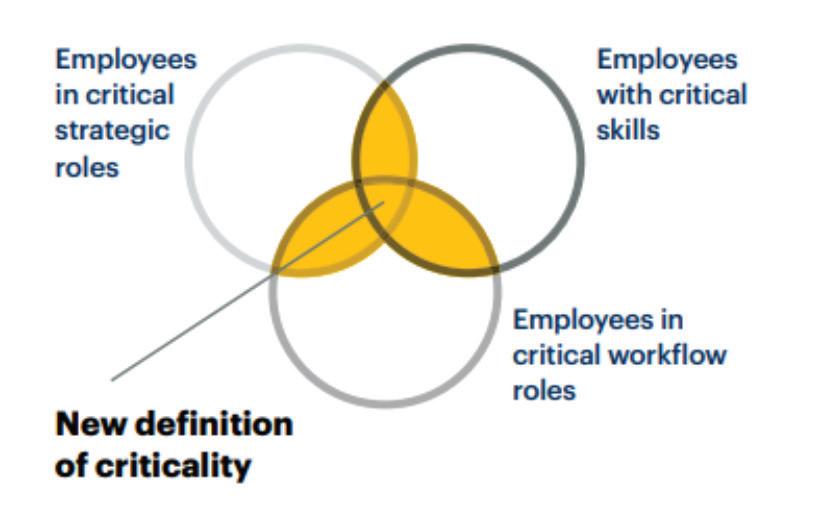
4 minute read
Time to Rethink the Way We Work: Emergence of a New Staffing Model
It’s Time to Rethink the Way We Work: Emergence of a New Staffing Model
We have all likely heard the adage “out of chaos, clarity emerges.” As much adversity and related challenges that have confronted us all during the COVID 19 pandemic, there have also been some notable ‘ah hah’ moments that have created some important paradigm shifts. It is likely most of us have seen such a phenomenon with how we look at work and how it is done. The stark reality is that we will never again think about work, how, and where it is done quite the same. Instead, these mental workforce staffing models are being reinvented and reimagined. Our perceptions and realities have been challenged. Most of us have come to a place where we know it is time for change in our workplaces and employment arrangements. Where
are our respective organizations in adopting this “break with” traditional thinking about work and staffing models? In what ways has our thinking been ‘forever changed’?
Future Work Trends: Migration to New Employment Arrangements
Before we can confidently dive into examining these shifting views of where and how we work, it is essential to explore the long-term implications of the pandemic on employment arrangements. A Gartner (2021) survey suggested that the impact of COVID 19 has led to notable and evolving workplace trends that will redefine our organizations and how we think about human capital and talent management. This foreshadowing includes three major themes: 1) acceleration of specific workplace strategies, 2) new definitions of critical skills and related performance outcomes, and 3) changes in organizational priorities and value proposition. Among these futuristic workplace trend predictions, include three primary workplace strategies that will emerge as increasingly ‘business essential’: 1) remote work, 2) employee data, and 3) the role of the employer as a social safety net. It is purported as much as 48% of the workforce can expect to work remotely for their employers at least some portion of their work week today, compared to 30% pre-pandemic. Such changes necessitate HR professionals to identify needed skills that facilitate remote work and digital acumen, adapt management styles to fit remote workplace models, provide multiple flexible work options to employees and broaden the recruiting pool to fit them, and redefine how work performance and outputs can be best evaluated. With remote working arrangements also brings in many cases increased electronic monitoring or use of passive data (i.e. virtual log-in/out, computer/ phone usage, email/internal communications, location, movement). While 16% of employers report such use of this type of data during the pandemic, it is anticipated that human resource professionals will be called upon to improve ethical data storage, redefine related policies, and rethink how collected data will be used to evaluate productivity, engagement, and performance. Finally, amidst these anticipated fast-paced trends, it is contended that organizational strategies will evolve and confront the growing role of the employer as a social safety net. While the employee experience is being expanded in many cases to include personal factors to include family responsibilities, it is projected that HR’s role will need to evolve into greater advocacy and a new or renewed focus on employee well-being and mental health to meet the changing needs of the workforce (Kropp, 2021).
By KIM LAFEVOR
Organizational leaders are also redefining critical skills and competencies that are needed to meet mission-critical strategic goals. In these new definitions, skills rather than specific job roles are continuing to rise in level of importance. In preparing for these emerging changes, HR can best prepare by encouraging employee reskilling and upskilling that expand job options, bolster succession plans and redesign workforce planning to reflect this new workforce model (Gartner, 2021).

Rethinking work has led in some cases the humanization of work and dehumanization in other instances. However, it has presented an opportunity to reassess and adapt organizational priorities.
Whether an employee’s work is performed on-site or remotely, there is a growing demand for emotionally intelligent leaders who can clearly define and articulate expectations and performance deliverables, promote diversity and strengthen a culture of inclusiveness, while also recognizing important and unique individual employee contributions.
Existing Gaps: Employees Expect Change in the Way They Work
In a similar theme, over the past year, we have all observed firsthand the transformational digitalization of work and how it has prompted unprecedented changes in the workplace and the way we work. To best assess how these pervasive changes have globally influenced working arrangements, Citrix (2021) conducted a study referred as the Work 2035 Project. This initiative, also known as “Talent Accelerator,” collected feedback from 500 HR directors and 2,000 knowledge workers from both large and middle-sized organizations with at least 500 employees, all participants had or were continuing to work from home due to COVID-19 restrictions. The conclusions from this study unveil a glimpse of what employees have come to expect as the ‘new work standards.’ There are three emerging priorities: 1. Employees overwhelmingly expect flexible options 2. Employees want to re-imagine how productivity is measured 3. Employees want to work with a diverse team










